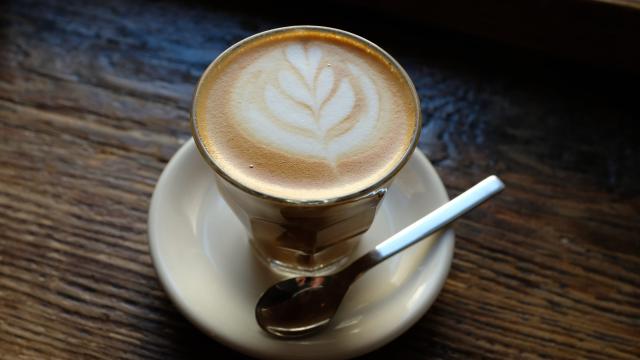People who live with chronic migraines but also love coffee might be in luck. A new study by Harvard researchers seems to show that it takes a lot of caffeine to actually set off a painful episode. They found that people who drank fewer than three caffeinated beverages in a day weren’t more likely to have a migraine than they did on days when they drank no caffeine at all.
The relationship between caffeine and migraines and headaches is complicated.
Caffeine is considered a key ingredient that boosts the effectiveness of over-the-counter painkillers specifically marketed for headache, like Excedrin (the brand-name version of the drug that combines aspirin, acetaminophen, and caffeine). And some people swear that a strong dose of coffee alone can alleviate their head pain.
Editor’s Note: In Australia, this would be roughly equivalent to Panadol Extra.
But there’s also some evidence that people who take too much caffeine can develop a tolerance to it, and when they stop taking it, they can develop even more painful rebound headaches (this effect might even be worsened by taking Excedrin-type drugs). At least one study has also found that when migraine sufferers wean themselves off caffeine completely, they respond better to other treatments.
The researchers behind this current study, published in The American Journal of Medicine, took a proactive tack to studying the topic. They asked patients who frequently experienced migraines to keep a diary for six weeks.
The patients filled out the diary every morning and night, writing down how often they drank something with caffeine as well as the timing and types of migraines they experienced in a day. They also detailed other lifestyle factors that can trigger migraines, such as their stress level, amount of sleep, or if they drank alcohol that day.
In total, 98 patients completed these diaries. The researchers found that patients who reported drinking one to two caffeinated beverages in a day didn’t experience more migraines on average than they did on days when they reportedly drank no caffeine. But when they had three or more such beverages, the odds of a migraine that same day went up.
“Interestingly, despite some patients with episodic migraine thinking they need to avoid caffeine, we found that drinking one to two servings/day was not associated with higher risk of headache,” said study author Suzanne Bertisch, a senior sleep researcher at Harvard Medical School, in a release by Beth Israel Deaconess Medical Center, a teaching hospital affiliated with the university.
Food diary studies have their limitations, the major one being that people aren’t the best at remembering what they ate or drank. But the way they tracked people’s health closely over a relatively long period of time — what’s known as a prospective type of study — is a strength over other similar studies.
Another limitation is that the researchers only counted the number of caffeinated drinks people had, not how much caffeine they actually consumed. A large iced coffee would obviously pack more of a punch than a small cup of green tea.
Still, it wasn’t all good news for caffeine. The study did find that people who almost never drank caffeine were more likely to get migraines on days that had just one or two caffeinated drinks. So there’s still a question as to what the sweet spot for caffeine in a day might be for migraine sufferers who can’t give up their java.
“More work is needed to confirm these findings, but it is an important first step,” said Bertisch.
